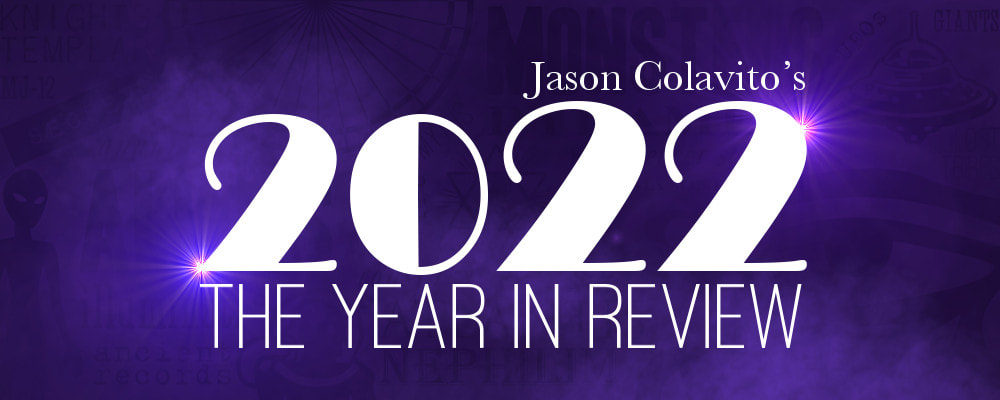|
This week, various editions of Vogue magazine published a lengthy piece on the failed romance of James Dean and Pier Angeli, born Anna Maria Pierangeli. The original Italian article by journalist Giacomo Aricò, published on Wednesday, and the truncated English adaptation published on Friday contain a number of misrepresentations and errors that came from the telephone game of repetition and PR that passes for “celebrity” coverage in our media. But the broader purpose of the piece, as the author writes in Italian, is to deny that Dean was either homosexual or bisexual, a remarkable claim for a major magazine in 2024. Let’s take a look at some of the ways the Vogue pieces went wrong.
14 Comments
Opposable Thumbs: How Siskel & Ebert Changed Movies Forever Matt Singer | Putnam | Oct. 2023 | 352 pages | ISBN: 9780593540152 | $29 Gene Siskel and Roger Ebert spent so long reviewing movies on television that, when Siskel died in 1999, I could not remember a time when I hadn’t watched them. They started their first review program six years before I was born (I’m 42), and as far back as I can remember, I can still picture my parents tuning in to hear about the newest movies—movies that, for the most part, they would only see on rented VHS tapes, months later. I tended to prefer Ebert to Siskel, not for any dramatic reason except that my local paper carried Ebert’s print reviews but not Siskel’s, so I felt like I understood his thinking more. Even when I was a teenager, Siskel & Ebert was still appointment viewing, and I recall setting extra time on the VCR to record the show when the local ABC affiliate’s sports coverage pushed it to odd hours of afternoon or overnight and we weren’t sure exactly when it would start.
Note: This essay is cross-posted in my Substack newsletter. This past weekend, Tom DeLonge, the punk rocker and UFO media entrepreneur, released his first feature film, Monsters of California, direct to streaming. DeLonge served as both director and co-writer of the film, which follows a teenage boy and his friends as they investigate conspiracies about aliens and the paranormal around San Diego only for the hero to achieve New Age enlightenment through realizing his place in the cosmos. Indifferently acted and roughly written, the movie is an amateurish production all the way around, the New Age equivalent of those Christian “movies” that badly approximate a Hollywood production. Like those evangelical films, Monsters also has a spiritual message, that all is consciousness, we are but specks a pantheistic tapestry, and that “advanced” aliens are our teachers and guides toward enlightenment.
Note: This article is cross-posted from my Substack because Twitter is limiting links to Substack. I think you'll find the historical content interesting. Nearly seven decades after James Dean died, I would have thought that everything that could be known about him was known. All but a small handful of people who knew him in life are now dead, and those left alive have had nothing new to say in decades. The magazine and newspaper articles have been raked through many times, and the scraps of archival materials picked clean. Then, to my amazement, Nate D. Sanders Auctions announced the sale later this month of more than 500 pages of James Dean’s business, legal, and personal correspondence and papers from the estate of his New York talent agent, Jane Deacy, who died in 2008. These papers, never before seen, are, frankly, astounding in what they reveal.
Last this week, we learned that Donald Spoto, the celebrity biographer, died at the age of 81. Spoto produced many well-regarded biographies, including Rebel, about James Dean. I found that book particularly useful in writing my own manuscript for my James Dean book. Spoto was kind enough to read an early draft of my book before his death and offered both useful critical notes and a blurb as endorsement: “His new book The Rebel and the Fear is sure to evoke spirited debate, not least when he addresses the lure and lore still attached to that hapless young actor, James Dean (1931-1955).” Spoto will be missed.
This year wasn’t quite as bad as 2021, so I can’t be too upset at a year that, if nothing else, did not get appreciably worse. On the other hand, nothing really improved either. Between inflation and further work cuts in my failing industry, it’s been hard. When a prominent astrologer said this year would be the best of my life, I wasn’t sure whether that was a promise or a threat. It’s a good thing astrology is bunk, or else I would be painfully depressed to think this was the best things will ever get.
In a more general sense, this was a year devoted mostly to UFOs, which dominated the paranoid paranormal discourse for the first ten months, until Atlantis made a late run for the crown. Here, then, is the year that was, edited and condensed from my blog posts and newsletter. Adoration and Pilgrimage: James Dean and Fairmount James F. Hopgood | Luminare Press | 2022 | 282 pages | 979-8886790108 | $18.95 Note: This review is cross-posted in my Substack newsletter, The current issue of Mojo, a music magazine, features an illustration of James Dean driving toward the reader in the Porsche Spyder in which he died. The singer Weyes Blood sits beside him as he speeds away from a flying saucer, its tractor beam chasing them toward Dean’s inevitable death. The striking image illustrates a line from Blood’s new song “Grapevine,” but the unusual portrait also suggests a longing to follow Dean into death, as though his demise were an act of transcendence, an event of cosmic importance. It’s not the kind of image you find associated with most celebrities. You don’t see much fan art of political junkies depicting themselves riding through Dealey Plaza alongside JFK, nor are there many beatific images of Marilyn Monroe as a psychopomp guiding fans to heaven.
This week, Rep. André Carson announced that his subcommittee of the House Intelligence Committee would hold a hearing next week on the Pentagon’s lack of transparency on UFOs. It is the first UFO hearing in Congress since 1966. Naturally, the New York Times brought back its biased reporters Ralph Blumenthal and Leslie Kean, both with conflicts of interest, to cover the story. Both reporters are longtime members of the UFO community. Blumenthal has openly spoken of his “transcendent” belief in the paranormal power of UFOs, and Kean spent much of the last year working for Bob Bigelow, a key figure in the government UFO story. She was also the longtime romantic partner of the late Budd Hopkins, an alien abduction researcher funded by Bigelow.
As part of the research for the new book I am crafting out of parts of the one that didn’t garner much interest, I have been researching government persecution of queer people in the postwar era. In so doing, I came across a rather dramatic fact that led me down a statistical rabbit-hole as I hunted the source of a seemingly dramatic fact that turned out not be what it seemed.
A few months ago, NBC's Peacock streaming service gave Demi Lovato a UFO series in which the streamer presented Lovato as a goofy, cuddly conspiracy theorist gawking in wonder at lights in the sky. Gaia TV saw the publicity that Lovato gained and appointed them a brand ambassador, and Lovato began telling their 118 million social media followers to watch hand-picked promoting extreme fringe history ideas, including lizard people conspiracies.
|
AuthorI am an author and researcher focusing on pop culture, science, and history. Bylines: New Republic, Esquire, Slate, etc. There's more about me in the About Jason tab. Newsletters
Enter your email below to subscribe to my newsletter for updates on my latest projects, blog posts, and activities, and subscribe to Culture & Curiosities, my Substack newsletter.
Categories
All
Terms & ConditionsPlease read all applicable terms and conditions before posting a comment on this blog. Posting a comment constitutes your agreement to abide by the terms and conditions linked herein.
Archives
July 2024
|
- Home
- Blog
- Books
-
Articles
-
Newsletter
>
- Television Reviews >
- Book Reviews
- Galleries >
- Videos
-
Collection: Ancient Alien Fraud
>
- Chariots of the Gods at 50
- Secret History of Ancient Astronauts
- Of Atlantis and Aliens
- Aliens and Ancient Texts
- Profiles in Ancient Astronautics >
- Blunders in the Sky
- The Case of the False Quotes
- Alternative Authors' Quote Fraud
- David Childress & the Aliens
- Faking Ancient Art in Uzbekistan
- Intimations of Persecution
- Zecharia Sitchin's World
- Jesus' Alien Ancestors?
- Extraterrestrial Evolution?
- Collection: Skeptic Magazine >
- Collection: Ancient History >
- Collection: The Lovecraft Legacy >
- Collection: UFOs >
- Scholomance: The Devil's School
- Prehistory of Chupacabra
- The Templars, the Holy Grail, & Henry Sinclair
- Magicians of the Gods Review
- The Curse of the Pharaohs
- The Antediluvian Pyramid Myth
- Whitewashing American Prehistory
- James Dean's Cursed Porsche
-
Newsletter
>
-
The Library
-
Ancient Mysteries
>
-
Ancient Texts
>
- Mesopotamian Texts >
-
Egyptian Texts
>
- The Shipwrecked Sailor
- Dream Stela of Thutmose IV
- The Papyrus of Ani
- Classical Accounts of the Pyramids
- Inventory Stela
- Manetho
- Eratosthenes' King List
- The Story of Setna
- Leon of Pella
- Diodorus on Egyptian History
- On Isis and Osiris
- Famine Stela
- Old Egyptian Chronicle
- The Book of Sothis
- Horapollo
- Al-Maqrizi's King List
- Teshub and the Dragon
- Hermetica >
- Hesiod's Theogony
- Periplus of Hanno
- Ctesias' Indica
- Sanchuniathon
- Sima Qian
- Syncellus's Enoch Fragments
- The Book of Enoch
- Slavonic Enoch
- Sepher Yetzirah
- Tacitus' Germania
- De Dea Syria
- Aelian's Various Histories
- Julius Africanus' Chronography
- Eusebius' Chronicle
- Chinese Accounts of Rome
- Ancient Chinese Automaton
- The Orphic Argonautica
- Fragments of Panodorus
- Annianus on the Watchers
- The Watchers and Antediluvian Wisdom
-
Medieval Texts
>
- Medieval Legends of Ancient Egypt >
- The Hunt for Noah's Ark
- Isidore of Seville
- Book of Liang: Fusang
- Agobard on Magonia
- Book of Thousands
- Voyage of Saint Brendan
- Power of Art and of Nature
- Travels of Sir John Mandeville
- Yazidi Revelation and Black Book
- Al-Biruni on the Great Flood
- Voyage of the Zeno Brothers
- The Kensington Runestone (Hoax)
- Islamic Discovery of America
- The Aztec Creation Myth
-
Lost Civilizations
>
-
Atlantis
>
- Plato's Atlantis Dialogues >
- Fragments on Atlantis
- Panchaea: The Other Atlantis
- Eumalos on Atlantis (Hoax)
- Gómara on Atlantis
- Sardinia and Atlantis
- Santorini and Atlantis
- The Mound Builders and Atlantis
- Donnelly's Atlantis
- Atlantis in Morocco
- Atlantis and the Sea Peoples
- W. Scott-Elliot >
- The Lost Atlantis
- Atlantis in Africa
- How I Found Atlantis (Hoax)
- Termier on Atlantis
- The Critias and Minoan Crete
- Rebuttal to Termier
- Further Responses to Termier
- Flinders Petrie on Atlantis
- Amazing New Light (Hoax)
- Lost Cities >
- OOPARTs
- Oronteus Finaeus Antarctica Map
- Caucasians in Panama
- Jefferson's Excavation
- Fictitious Discoveries in America
- Against Diffusionism
- Tunnels Under Peru
- The Parahyba Inscription (Hoax)
- Mound Builders
- Gunung Padang
- Tales of Enchanted Islands
- The 1907 Ancient World Map Hoax
- The 1909 Grand Canyon Hoax
- The Interglacial Period
- Solving Oak Island
-
Atlantis
>
- Religious Conspiracies >
-
Giants in the Earth
>
-
Fossil Origins of Myths
>
- Fossil Teeth and Bones of Elephants
- Fossil Elephants
- Fossil Bones of Teutobochus
- Fossil Mammoths and Giants
- Giants' Bones Dug Out of the Earth
- Fossils and the Supernatural
- Fossils, Myth, and Pseudo-History
- Man During the Stone Age
- Fossil Bones and Giants
- Mastodon, Mammoth, and Man
- American Elephant Myths
- The Mammoth and the Flood
- Fossils and Myth
- Fossil Origin of the Cyclops
- History of Paleontology
- Fragments on Giants
- Manichaean Book of Giants
- Geoffrey on British Giants
- Alfonso X's Hermetic History of Giants
- Boccaccio and the Fossil 'Giant'
- Book of Howth
- Purchas His Pilgrimage
- Edmond Temple's 1827 Giant Investigation
- The Giants of Sardinia
- Giants and the Sons of God
- The Magnetism of Evil
- Tertiary Giants
- Smithsonian Giant Reports
- Early American Giants
- The Giant of Coahuila
- Jewish Encyclopedia on Giants
- Index of Giants
- Newspaper Accounts of Giants
- Lanier's A Book of Giants
-
Fossil Origins of Myths
>
-
Science and History
>
- Halley on Noah's Comet
- The Newport Tower
- Iron: The Stone from Heaven
- Ararat and the Ark
- Pyramid Facts and Fancies
- Argonauts before Homer
- The Deluge
- Crown Prince Rudolf on the Pyramids
- Old Mythology in New Apparel
- Blavatsky on Dinosaurs
- Teddy Roosevelt on Bigfoot
- Devil Worship in France
- Maspero's Review of Akhbar al-zaman
- The Holy Grail as Lucifer's Crown Jewel
- The Mutinous Sea
- The Rock Wall of Rockwall
- Fabulous Zoology
- The Origins of Talos
- Mexican Mythology
- Chinese Pyramids
- Maqrizi's Names of the Pharaohs
-
Extreme History
>
- Roman Empire Hoax
- American Antiquities
- American Cataclysms
- England, the Remnant of Judah
- Historical Chronology of the Mexicans
- Maspero on the Predynastic Sphinx
- Vestiges of the Mayas
- Ragnarok: The Age of Fire and Gravel
- Origins of the Egyptian People
- The Secret Doctrine >
- Phoenicians in America
- The Electric Ark
- Traces of European Influence
- Prince Henry Sinclair
- Pyramid Prophecies
- Templars of Ancient Mexico
- Chronology and the "Riddle of the Sphinx"
- The Faith of Ancient Egypt
- Remarkable Discoveries Within the Sphinx (Hoax)
- Spirit of the Hour in Archaeology
- Book of the Damned
- Great Pyramid As Noah's Ark
- Richard Shaver's Proofs
-
Ancient Texts
>
-
Alien Encounters
>
-
US Government Ancient Astronaut Files
>
- Fortean Society and Columbus
- Inquiry into Shaver and Palmer
- The Skyfort Document
- Whirling Wheels
- Denver Ancient Astronaut Lecture
- Soviet Search for Lemuria
- Visitors from Outer Space
- Unidentified Flying Objects (Abstract)
- "Flying Saucers"? They're a Myth
- UFO Hypothesis Survival Questions
- Air Force Academy UFO Textbook
- The Condon Report on Ancient Astronauts
- Atlantis Discovery Telegrams
- Ancient Astronaut Society Telegram
- Noah's Ark Cables
- The Von Daniken Letter
- CIA Psychic Probe of Ancient Mars
- Scott Wolter Lawsuit
- UFOs in Ancient China
- CIA Report on Noah's Ark
- CIA Noah's Ark Memos
- Congressional Ancient Aliens Testimony
- Ancient Astronaut and Nibiru Email
- Congressional Ancient Mars Hearing
- House UFO Hearing
- Ancient Extraterrestrials >
- A Message from Mars
- Saucer Mystery Solved?
- Orville Wright on UFOs
- Interdimensional Flying Saucers
- Poltergeist UFOs
- Flying Saucers Are Real
- Report on UFOs
-
US Government Ancient Astronaut Files
>
-
The Supernatural
>
- The Devils of Loudun
- Sublime and Beautiful
- Voltaire on Vampires
- Demonology and Witchcraft
- Thaumaturgia
- Bulgarian Vampires
- Religion and Evolution
- Transylvanian Superstitions
- Defining a Zombie
- Dread of the Supernatural
- Vampires
- Werewolves and Vampires and Ghouls
- Science and Fairy Stories
- The Cursed Car
-
Classic Fiction
>
- Lucian's True History
- Some Words with a Mummy
- The Coming Race
- King Solomon's Mines
- An Inhabitant of Carcosa
- The Xipéhuz
- Lot No. 249
- The Novel of the Black Seal
- The Island of Doctor Moreau
- Pharaoh's Curse
- Edison's Conquest of Mars
- The Lost Continent
- Count Magnus
- The Mysterious Stranger
- The Wendigo
- Sredni Vashtar
- The Lost World
- The Red One
- H. P. Lovecraft >
- The Skeptical Poltergeist
- The Corpse on the Grating
- The Second Satellite
- Queen of the Black Coast
- A Martian Odyssey
- Classic Genre Movies
-
Miscellaneous Documents
>
- The Balloon-Hoax
- A Problem in Greek Ethics
- The Migration of Symbols
- The Gospel of Intensity
- De Profundis
- The Life and Death of Crown Prince Rudolf
- The Bathtub Hoax
- Crown Prince Rudolf's Letters
- Position of Viking Women
- Employment of Homosexuals
- James Dean's Scrapbook
- James Dean's Love Letters
- The Amazing James Dean Hoax!
- James Dean, The Human Ashtray
- Free Classic Pseudohistory eBooks
-
Ancient Mysteries
>
- About Jason
- Search
© 2010-2024 Jason Colavito. All rights reserved.









 RSS Feed
RSS Feed
